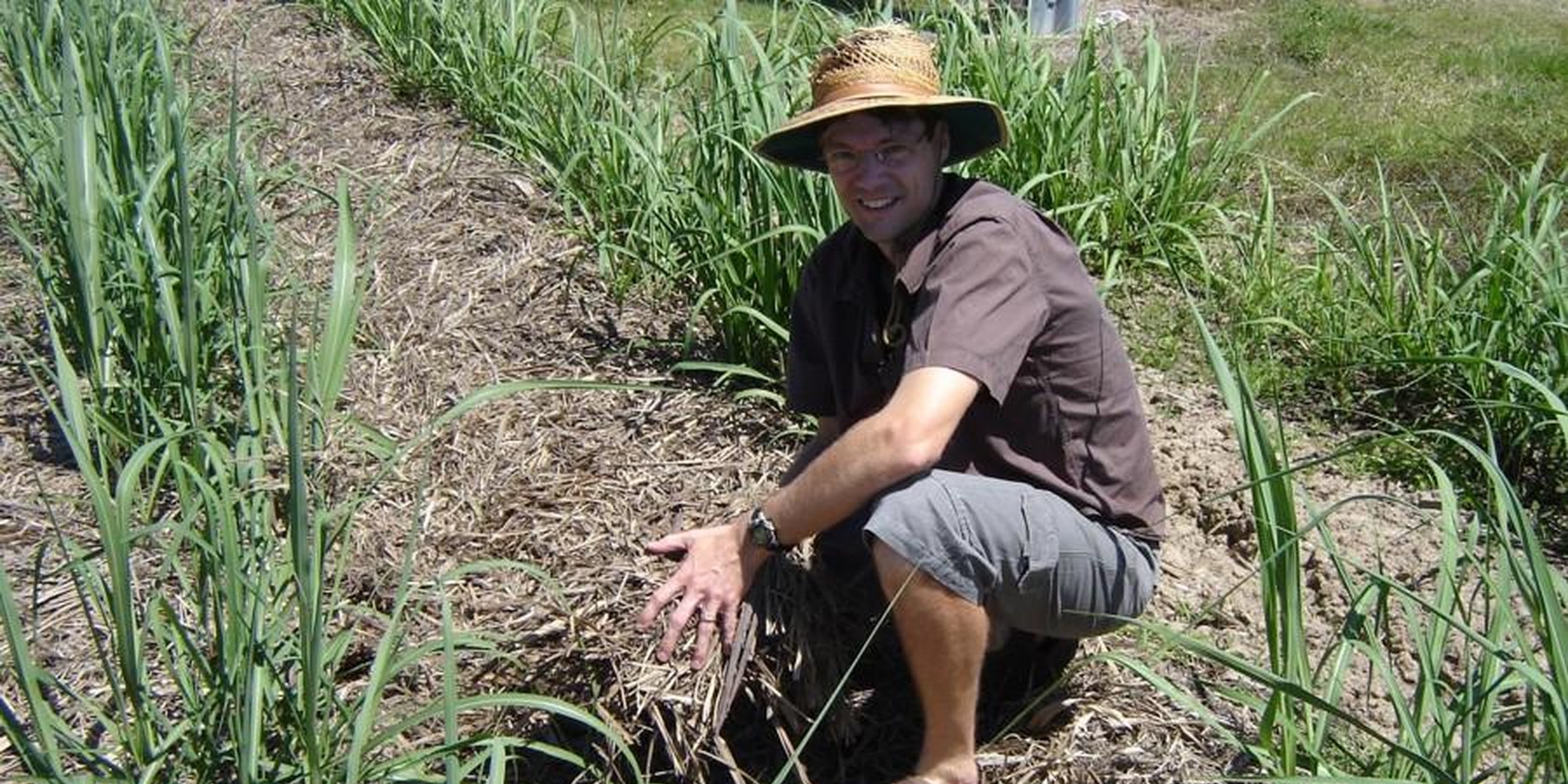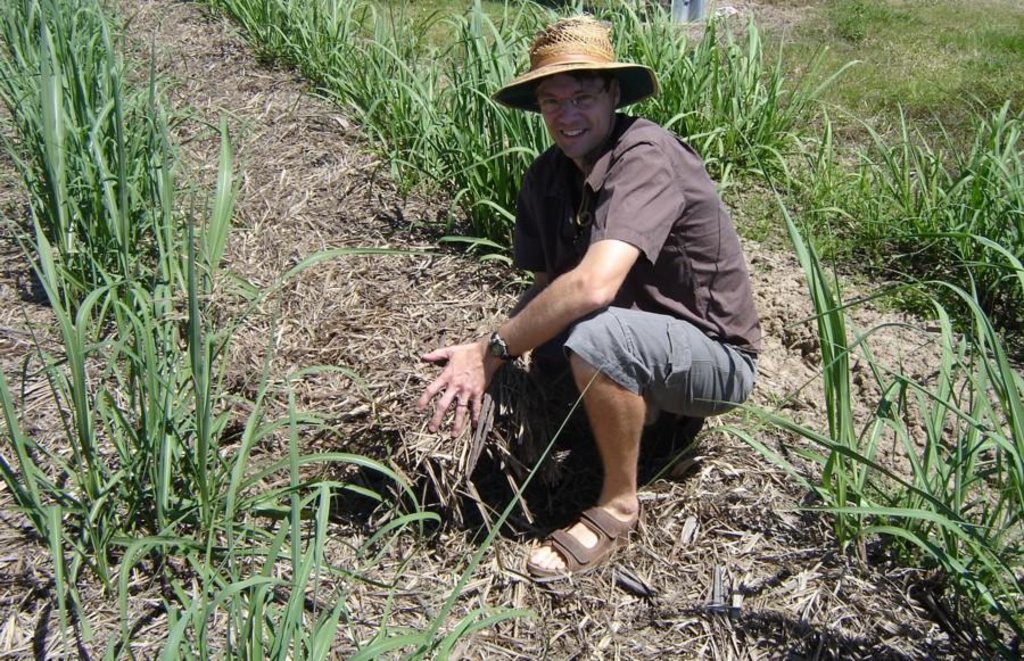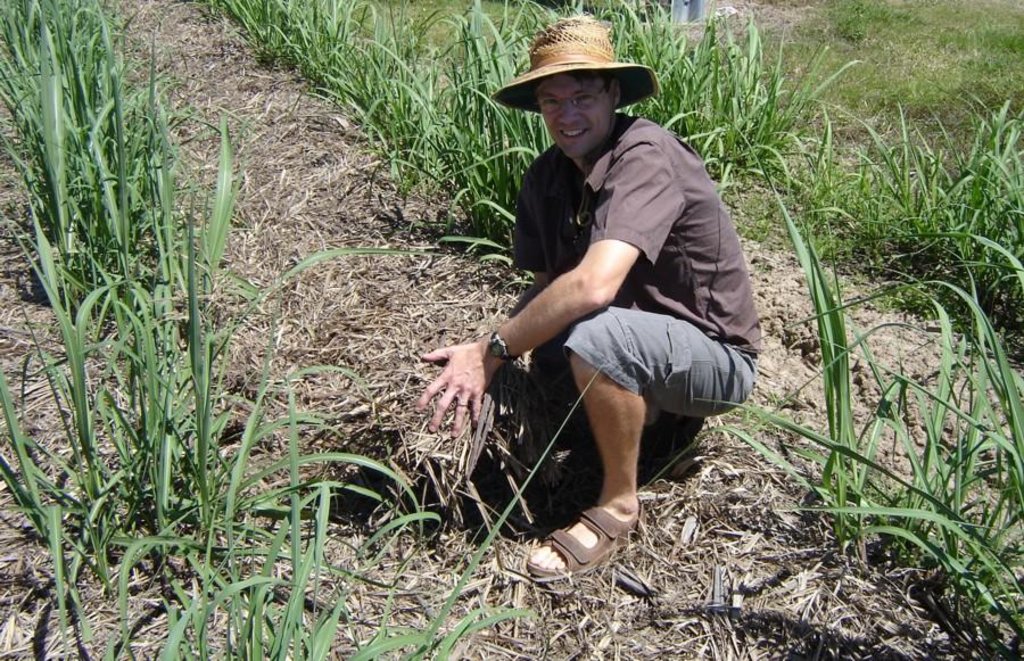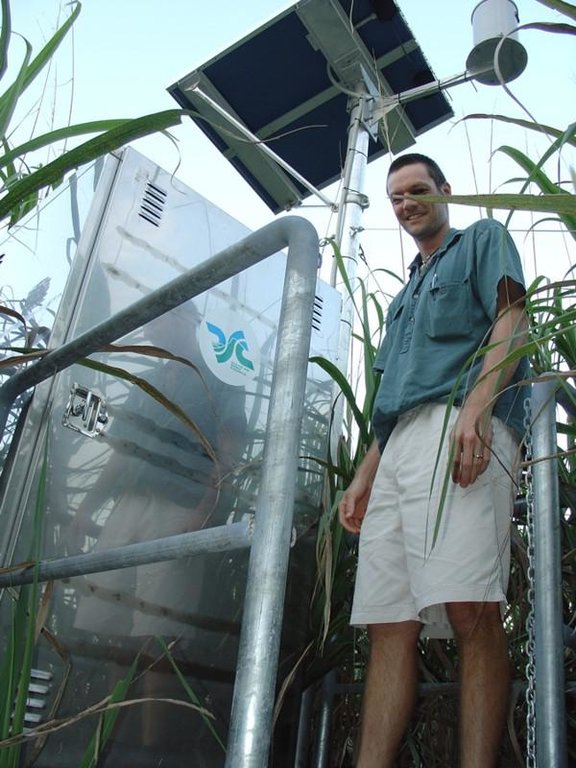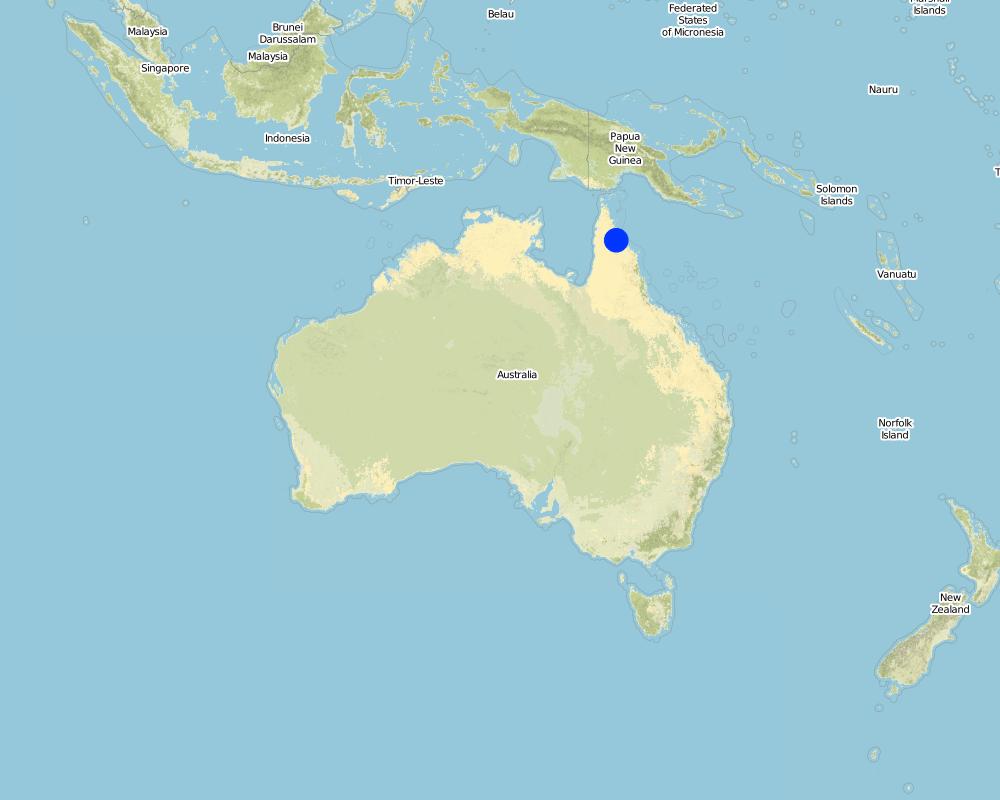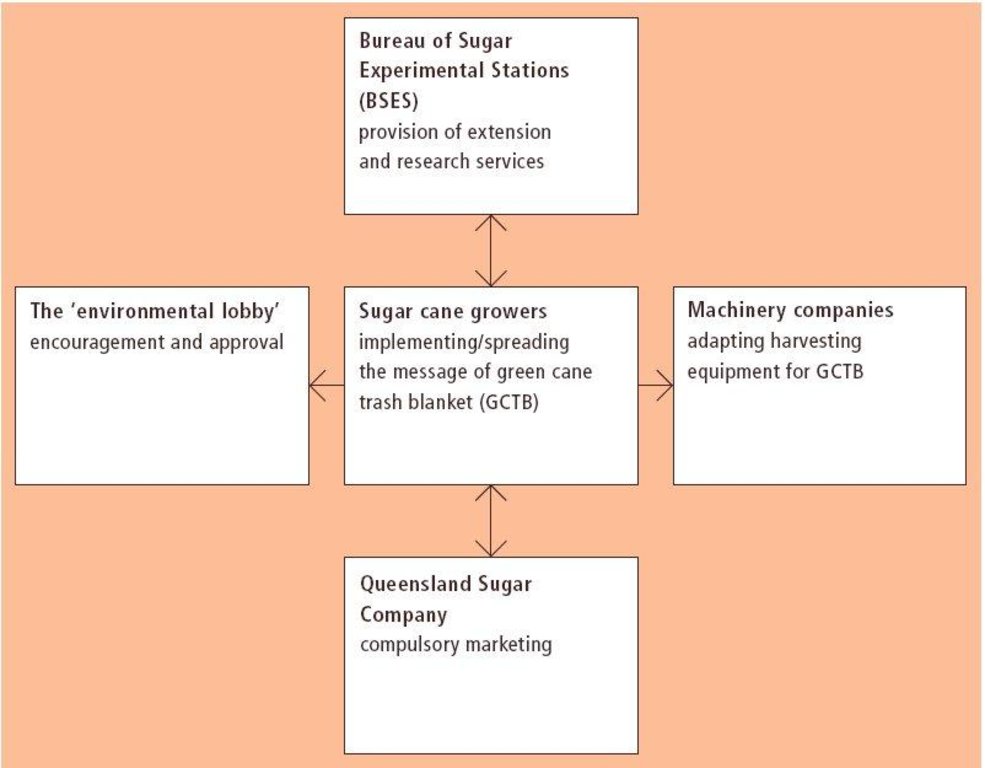The 'Triple bottom line' [Australia]
- Creación:
- Actualización:
- Compilador: Anthony J. Webster
- Editor: –
- Revisor: David Streiff
approaches_2668 - Australia
Visualizar secciones
Expandir todo Colapsar todos1. Información general
1.2 Detalles de contacto de las personas de referencia e instituciones involucradas en la evaluación y la documentación del Enfoque
Nombre de la(s) institución(es) que facilitaron la documentación/ evaluación del Enfoque si fuera relevante)
CSIRO (CSIRO) - Australia1.3 Condiciones referidas al uso de datos documentados mediante WOCAT
El compilador y la/s persona(s) de referencia claves aceptan las condiciones acerca del uso de los datos documentados mediante WOCAT :
Sí
1.4 Referencia/s al/los Cuestionario(s) de Tecnologías MST
2. Descripción del Enfoque MST
2.1 Breve descripción del Enfoque
A new expression used by agriculturalists in Australia to explain why farmers change practices: the 'triple bottom line' implies economic, environmental and social concerns.
2.2 Descripción detallada del Enfoque MST
Descripción detallada del Enfoque MST:
Aims / objectives: A fundamental change has occurred in farming practice amongst sugar cane growers in the tropics of far north Queensland. Where it was once standard practice to burn cane before harvest (defoliating green canes for easier harvest), tradition has been turned on its head and now almost no-one burns. Instead a 'green cane trash blanket' system has developed, with multiple benefits and few or no drawbacks. There has been no official campaign or punitive sanctions imposed, no enticing financial incentives offered or charismatic environmental leadership - just a quiet technological revolution, based on the principles of the 'triple bottom line' (TBL).
Methods: TBL has recently emerged into common usage amongst agriculturalists in Australia. Rather than attributing farmers' actions as simple responses to economic stimuli ('the bottom line') TBL is a framework that helps explain the complexity of factors that influence farmers to modify their practices. TBL suggests that farmers do indeed respond to money, but also to environmental concerns, and furthermore to social considerations as well. This gives credit to farmers for being responsible stewards of the land. In this particular case, the transition in technology started in 1974, when sugar cane growers in the far north of Queensland were simply unable to burn their cane prior to harvest because of the exceptionally heavy rains. Instead, they had to harvest wet - and green. The technical implications were first, a slower harvest speed because machinery had to cope with a greater load of biomass, and second, a thick residual blanket of trash that covered the soil. The multiple benefits of mulching were recognised by a few growers, who then continued to harvest green cane. Non-burning spread - a technology now described as the 'green cane trash blanket'- until almost every grower adopted it within one generation. While the extension service has supported the transition, growers themselves tookthe initiative to change. There are indeed small financial benefits, chiefly in terms of reduced overall input costs, but growers have simultaneously been motivated by social and environmental considerations. Burning has come to be considered anti-social: a dirty practice, carrying the danger of fire spreading outside the targeted fields. Neither is it a pleasant task, requiring help of family and friends, often at inconvenient times.
Other important information: From an environmental perspective, the benefits of trash mulch are tangible in terms of improved soil quality, and reduced erosion rates. And, equally important, the end result is reduced damage to the close-by Great Barrier Reef with its sediment-sensitive living coral.
The triple bottom line(TBL) is an expression which has evolved in Australia to help explain why farmers act as they do. Its three components of economics, the environment and social aspects cover the considerations that cause farmers to modify technologies. TBL implicitly gives credit to farmer for being sensitive to multiple external signals. In this case the change in practice is from burning sugar cane to harvesting it green in Far North Queensland. This is a case where emerging conservation-friendly farmer practice and the goals of the environmental lobby have neatly coincided.
2.3 Fotos del Enfoque
2.5 País/ región/ lugares donde el Enfoque fue aplicado
País:
Australia
Región/ Estado/ Provincia:
Queensland
Map
×2.6 Fechas de inicio y conclusión del Enfoque
Indique año del inicio:
1974
2.7 Tipo de Enfoque
- tradicional/ local
2.8 Propósitos/ objetivos principales del Enfoque
The Approach focused on SLM only
(1) Demonstration and dissemination. (2) The spread of non-burning practices, specifically the 'green cane trash blanket' technology to promote sustainable and environmentally friendly sugar cane production. (3) Indirectly: to satisfy social concerns associated with burning of sugar cane.
The SLM Approach addressed the following problems: (1) Anti-social farming practice of burning sugar cane which also has negative environmental impacts, both in situ, and offsite in the coral reef. (2) Resistance to change in traditional farming practice.
2.9 Condiciones que facilitan o impiden la implementación de la/s Tecnología/s aplicadas bajo el Enfoque
normas y valores sociales/ culturales/ religiosos
- impiden
traditional way of doing things/social resistance
Treatment through the SLM Approach: demonstration and dissemination of benefits
disponibilidad/ acceso a recursos y servicios financieros
- impiden
Higher costs of harvesting (a small premium charged by contractors per tonne of green cane harvested).
Treatment through the SLM Approach: These costs are offset by lower tillage input, no costs associated with burning, and lower inputs of agrochemicals also.
marco de trabajo legal (tenencia de tierra, derechos de uso de tierra y agua)
- facilitan
- impiden
conocimiento de MST, acceso a apoyo técnico
- impiden
Harvesting machines at first were not so well able to cope with the greater biomass to be harvested.
Treatment through the SLM Approach: Manufacturers developed higher capacity harvesters.
3. Participación y roles de las partes interesadas involucradas
3.1 Partes interesadas involucradas en el Enfoque y sus roles
- usuarios locales de tierras/ comunidades locales
There is no difference between men and women in principle, though de facto most growers are male.
- gobierno nacional (planificadores, autoridades)
politicians (govt. agencies)
- environmentalists
3.2 Involucramiento de los usuarios locales de tierras/ comunidades locales en las distintas fases del Enfoque
| Involucramiento de los usuarios locales de tierras/ comunidades locales | Especifique quién se involucró y describa las actividades | |
|---|---|---|
| iniciación/ motivación | auto-movilización | starting up the practice; starting up the practice of green cane trash blanket (GCTB) |
| planificación | ninguno | |
| implementación | interactivo | spreading the word; growers spreading the word, support by extension services |
| monitoreo y evaluación | interactivo | growers joining hands with research; formal and informal disseminations of observations |
| Research | interactivo | growers joining hands with research. Quantifying benefits short, long term and downstream |
3.3 Flujograma (si estuviera disponible)
Descripción:
Institutional framework Inter-relationships between sugar cane growers and other stakeholders.
3.4 La toma de decisiones en la selección de Tecnología(s) MST
Especifique quién decidió la selección de las Tecnología/ Tecnologías a implementarse:
- solamente usuarios de tierras (autoiniciativa)
Explique:
sugar cane growers
Decisions on the method of implementing the SLM Technology were made by by land users* alone (self-initiative / bottom-up)
4. Apoyo técnico, fortalecimiento institucional y gestión del conocimiento
4.1 Construcción de capacidades / capacitación
¿Se proporcionó la capacitación a usuarios de tierras/ otras partes interesadas?
No
4.2 Servicio de asesoría
¿Los usuarios de tierras tienen acceso a un servicio de asesoría?
Sí
Especifique si servicio proporcionado se realizó:
- en los campos de los usuarios de tierras
Describa/ comentarios:
Name of method used for advisory service: green cane trash blanket (GCTB) system; Key elements: visits, Field days, publications; (1) Advisory service was carried out through: Bureau of Sugar Experimental Stations (BSES).(2) Advisory service was carried out through: Bureau of Sugar Experimental Stations (BSES).
4.3 Fortalecimiento institucional (desarrollo institucional)
¿Se establecieron o fortalecieron instituciones mediante el Enfoque?
- no
4.4 Monitoreo y evaluación
¿El monitoreo y la evaluación forman parte del Enfoque?
Sí
Comentarios:
Technical aspects were ad hoc monitored by land users through observations
There were None changes in the Approach as a result of monitoring and evaluation: Not applicable.
4.5 Investigación
¿La investigación formó parte del Enfoque?
Sí
Especifique los temas:
- economía/ marketing
- ecología
- tecnología
Proporcione detalles adicionales e indique quién hizo la investigación:
There has been some ad hoc research carried out on technical parameters by both the BSES as well as CSIRO.
5. Financiamiento y apoyo material externo
5.1 Presupuesto anual para el componente MST del Enfoque
Comentarios (ej. fuentes principales de financiamiento/ donantes principales):
Approach costs were met by the following donors: government (national government, Bureau of Sugar Experiment Stations): 20.0%; other (growers themselves): 80.0%
5.2 Apoyo financiero/material proporcionado a los usuarios de tierras
¿Los usuarios de tierras recibieron financiamiento/ apoyo material para implementar la Tecnología/ Tecnologías? :
Sí
Si respondió sí, especifique el tipo o los tipos de apoyo, condiciones y proveedor(es) :
By government (national government, Bureau of Sugar Experiment Stations)
5.3 Subsidios para insumos específicos (incluyendo mano de obra)
- ninguno
Si la mano de obra de usuarios de tierras fue un insumo sustancial, ¿fue:
- voluntario?
Comentarios:
Farmers themselves provide labour
There are no subsidies connected to GCTB. Australia does not subsidise its sugar cane growers and sugar is sold at the world price.
5.4 Crédito
¿Se proporcionó crédito bajo el Enfoque para actividades MST?
No
6. Análisis de impacto y comentarios de conclusión
6.1 Impactos del Enfoque
¿El Enfoque ayudó a los usuarios de tierras a implementar y mantener Tecnologías MST?
- No
- Sí, un poco
- Sí, moderadamente
- Sí, mucho
Considerable: nutrient losses reduced, erosion reduced, organic matter built up, etc.
Did other land users / projects adopt the Approach?
- No
- Sí, un poco
- Sí, moderadamente
- Sí, mucho
The 'triple bottom line' is probably active throughout Australia in influencing farmers??? decisions.
6.3 Sostenibilidad de las actividades del Enfoque
¿Pueden los usuarios de tierras sostener lo que se implementó mediante el Enfoque (sin apoyo externo)?
- sí
Si respondió que sí, describa cómo:
By definition this is sustainable: it is an internal mechanism amongst farmers.
6.4 Fortalezas/ ventajas del Enfoque
| Fuerzas/ ventajas/ oportunidades desde la perspectiva del compilador o de otra persona de referencia clave |
|---|
| Farmers take the responsibility of choosing a land management practice that has a positive 'triple bottom line': environmental, economic and social benefits. (How to sustain/ enhance this strength: Support awareness raising and give appreciation to the on-site and off-site benefits; acknowledge sugar produced under this system an environmentally friendly and economic product.) |
| Has successfully stimulated the spread of the green cane trash blanket system. (How to sustain/ enhance this strength: Outsiders should continue to support farmers' multiple concerns.) |
| Sugar cane growing has previously had a bad environmental and social reputation, especially here, close to the Great Barrier Reef, which is a World Heritage Site. This change in practice, resulting from the 'triple bottom line' has changed the reputation of sugar cane growers. (How to sustain/ enhance this strength: Make this public.) |
6.5 Debilidades/ desventajas del Enfoque y formas de sobreponerse a ellos
| Debilidades/ desventajas/ riesgos desde la perspectiva del compilador o de otra persona de referencia clave | ¿Cómo sobreponerse a ellas? |
|---|---|
| The fact that farmers are responsive to environmental and social as well as economic stimuli is covered up by conventional thinking that 'only money matters to them'. | Investigation and documentation of the 'triple bottom line' is required. |
7. Referencias y vínculos
7.1 Métodos/ fuentes de información
- visitas de campo, encuestas de campo
- entrevistas con usuarios de tierras
Vínculos y módulos
Expandir todo Colapsar todosVínculos
No hay vínculos
Módulos
No se hallaron módulos


